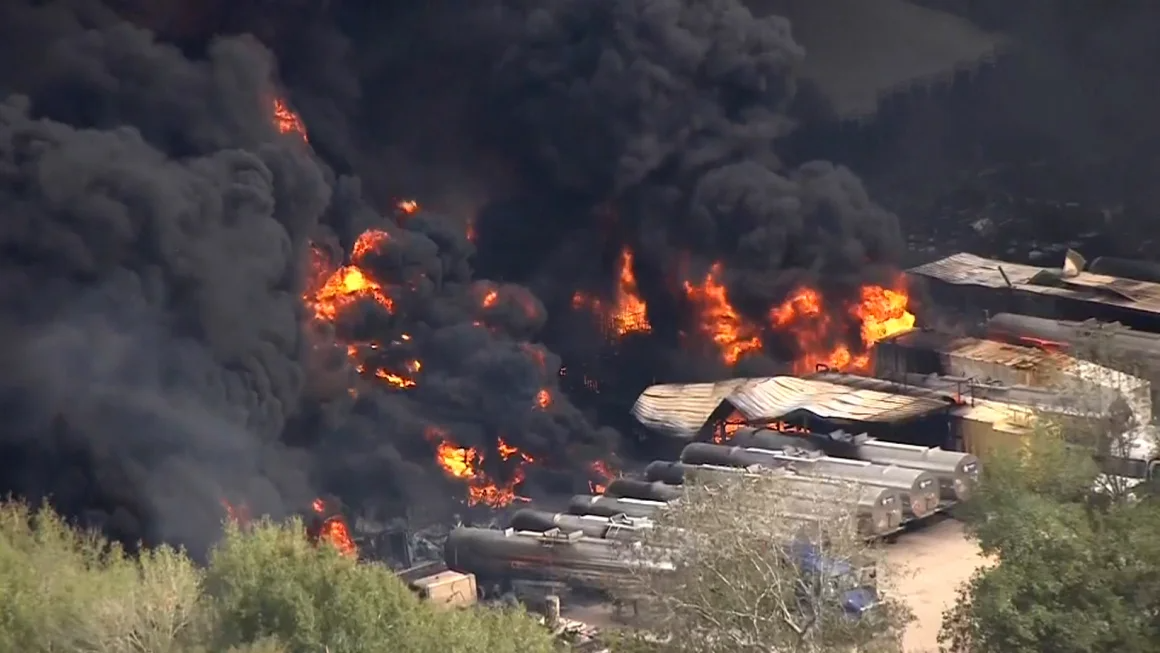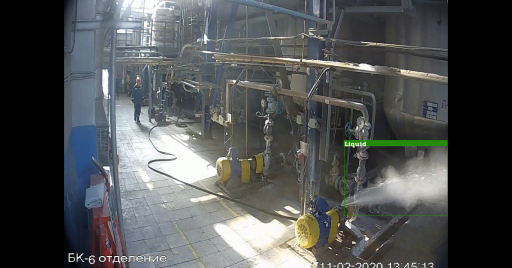Fire safety is a substantially important part of risk management in every workplace. Therefore, alongside developing technology, new fire safety solutions emerge. However, most new fire protection systems concentrate on fire suppression. But in this article, we talk about a new innovative that deploy AI, computer vision and machine learning to empower HSE people and facilitate communication and accelerate emergency evacuation, and it’s not limited only to AI fire detection! So, let’s see how AI can be a bridge to fire safety excellence!
Table of content
Why is it essential to improve Fire safety?
Six people were injured, and many properties were damaged in a great London fire and explosion on June 28, 2021. Fire occurs frequently and causes both fatalities and injuries in addition to property damage. Because of this, fire safety and prevention must be improved. For some clarity, let’s see some statistics about fire accidents:
- According to the NFPA, 35,095 fires occurred between 2011 and 2015 in U.S industrial and manufacturing properties. 71% of these fires were unclassified or outside, and 20% of them were structure fires. NFPA estimates that fire causes $1.2 billion in property damage annually.
- Based on the most recent BLS report, 1,700 nonfatal injuries and illnesses were caused by fire and explosion in the U.S. private industry in 2019.
The November 2023 fire at a Houston chemical plant was a devastating incident, though thankfully, there were no reported casualties.
Nevertheless, contemplating the impact on lives and the potential consequences raises a critical question: Are we fully utilizing all available tools to prevent such disasters?

You can also check out today’s news. There is an accident linked to a fire somewhere in your country or around the world. Therefore, we need to find new solutions to prevent fires besides current fire suppression systems. Here are some ways in which AI can help.
Real-Time Detection: Enhancing Fire Safety
Detecting smoke, leaks, and fires in their early stages can significantly prevent fire outbreaks. Until now, various sensors have been used for these purposes, but they often encountered issues such as breakage, lack of integration, inadequate inspections, and more, rendering them inefficient.
By utilizing AI integrated into cameras, not only can real-time detection be achieved, but it also ensures comprehensive inspection and proper functionality of the tools. This integration allows for the gathering of data and seamless tool integration. Let’s first explore some real-time detection features:
Smoke detection
Detecting smoke can hugely reduce the chance of a fire accident or the inhalation of toxic gases. However, many current smoke detectors are prone to malfunction for a variety of reasons.
The limitations of current smoke detectors
The smoke alarm is an essential component of a fire detection system, and smoke detectors are even used in residential sectors and houses. However, current smoke detectors often malfunction due to several reasons:
- Humidity: Detectors may confuse humidity particles as smoke particles when high humidity is present. In some cases, the air is so dense that it scatters the light beam from a photoelectric sensor or sticks to the ions in an ionization chamber.
- Dust: As a result of dust buildup, smoke alarms should also be cleaned regularly.
- Strong chemicals nearby: Smoke detectors are also sensitive to the particles in the air released by chemicals.
- Batteries: It is necessary to check and change smoke detector batteries frequently.
On the other hand, there may still be some situations in the workplace where smoke from piping can cause fatalities because no smoke alarm covers that area for early detection of smoke. Consequently, new technologies are being developed to detect smoke early and prevent fires or toxic inhalation. But how?
How intelligent smoke detection improves fire safety
In combination with security cameras installed in different areas at the workplace, the AI technology enables real-time detection of smoke and summoning emergency assistance from HSE staff or predefined authorities, even from outside the workplace. Here are some benefits:
- This technology can be highly influential in places that are not frequented by workers.
- This AI-based safety solution can check the cameras’ function and alert if they don’t work correctly. As a result, despite current smoke detectors, which can fail for various reasons, This technology will always function.
- The combination of AI-based smoke detection with fallen person detection and personal protective equipment detection will substantially reduce related fatalities and injuries.
Leak detection
Leakage is another common cause of fires, alongside smoke. for instance, in 2021, a fire broke out on a Singaporean container vessel carrying a mixture of chemicals, including 25 tons of nitric acid. This catastrophe probably came about as a result of a small leak. AI can be useful in this regard as well.
New safety solutions incorporating artificial intelligence into surveillance cameras can identify leaks and fluids – even tiny ones. The following are a few of its advantages:
- The system can notify people outside the workplace via text message.
- A user can choose when an alert message is sent or when the siren sounds, for example, two minutes after a leak is detected (based on the leak’s pressure).
- It assists HSE officers in avoiding accidents or preventing losses. From the moment a leak begins until an accident occurs, there is always a window of opportunity to make a life-saving decision.
Fire detection
An early fire detection will decrease the risk of fires creating catastrophic damages. In this respect, AI might prove beneficial.
- Integrating this technology into a fire suppression system can reduce reaction times, resulting in a more likely containment of the fire and reduction of damage.
- The system can check the camera’s function and alert if it is not working correctly. As a result, it will always work
- The operator can specify who will receive the alert and when it will be sent. As well as sending text messages inside the workplace, the software can also send text messages outside the workplace.

Fire safety by enhancing HSE compliance control
HSE professionals are burdened with numerous tasks, especially in large sites like refineries where risks abound, operations run simultaneously, and multiple personnel are involved. Given the limitations of physical presence, ensuring strict compliance control becomes vital. Many incidents, including explosions and fires, result from compliance control weaknesses.
Integrating AI into surveillance cameras and developing effective action plans facilitates 24/7 intelligent compliance control (subject to camera coverage). This system significantly supports HSE professionals by promptly identifying violations, allowing early intervention to protect lives and assets.
Enhancing Fire Safety by Streamlined Communication
Improving fire safety means more than just spotting fires quickly. It’s really important to tell different groups and people all the important details about a fire – how serious it is, exactly where it is, and more. Imagine a smart tech that easily does all that for you. That’s where AI comes in. It helps make communication smoother.
AI works like the engine of a system. It quickly shares important info with the right people, tells the responders, and gives a clear picture of what’s happening. By spreading details about how serious the fire is, where it is, what dangers might be there, and how to stay safe, AI makes sure everyone knows what they need to.
This tech doesn’t just speed up talking—it makes the response to fires better. It’s really good at handling lots of information fast. This helps make fire safety rules work better for everyone. With AI in the mix, talking about fires gets a lot easier, making things safer for everyone.
Streamlining Emergency Evacuations
At the end, it’s worthwhile to mention that AI has also a profound impact on emergency evacuation, revolutionizing safety protocols by orchestrating efficient, secure evacuations. Through real-time data analysis, AI predicts hazards, charts optimized routes, and consistently monitors paths for obstructions, ensuring clear, obstacle-free passages. Tailored communication via mobile apps and signage guides individuals, while AI-driven crowd analysis prevents congestion and manages flow, averting potential dangers. Moreover, AI assists in resource allocation for emergency responders and evaluates post-evacuation effectiveness, refining strategies for future crises. Overall, AI’s capacity to swiftly process information and adapt ensures a streamlined, safe evacuation process, ultimately safeguarding lives during emergencies.